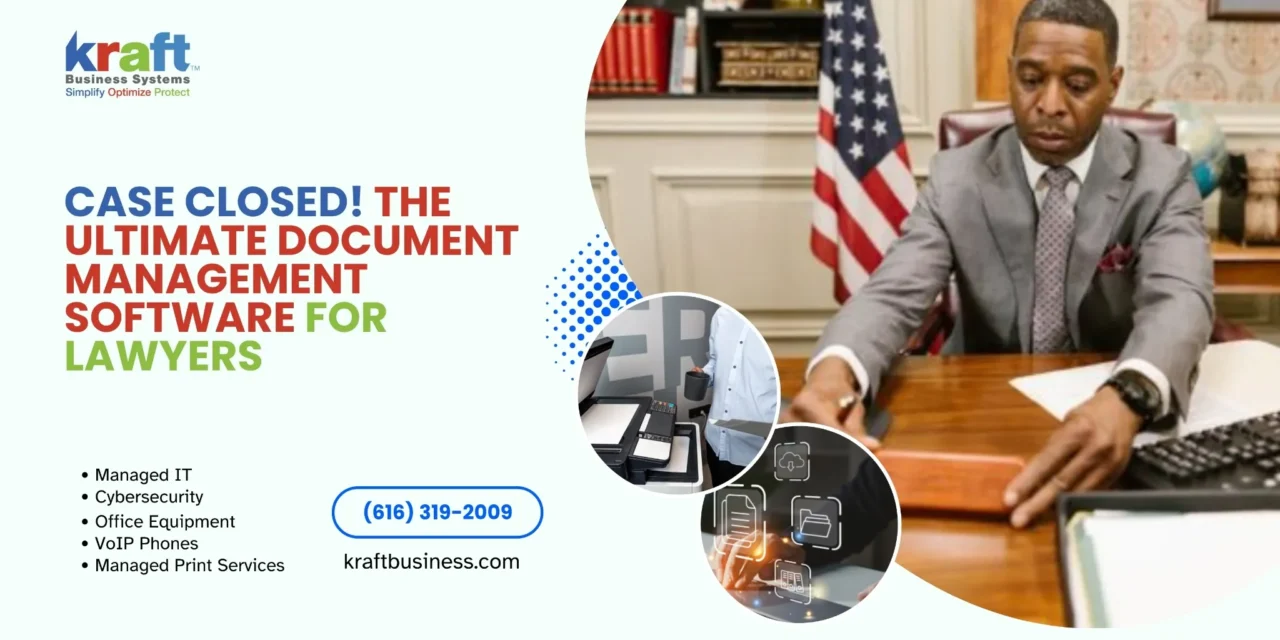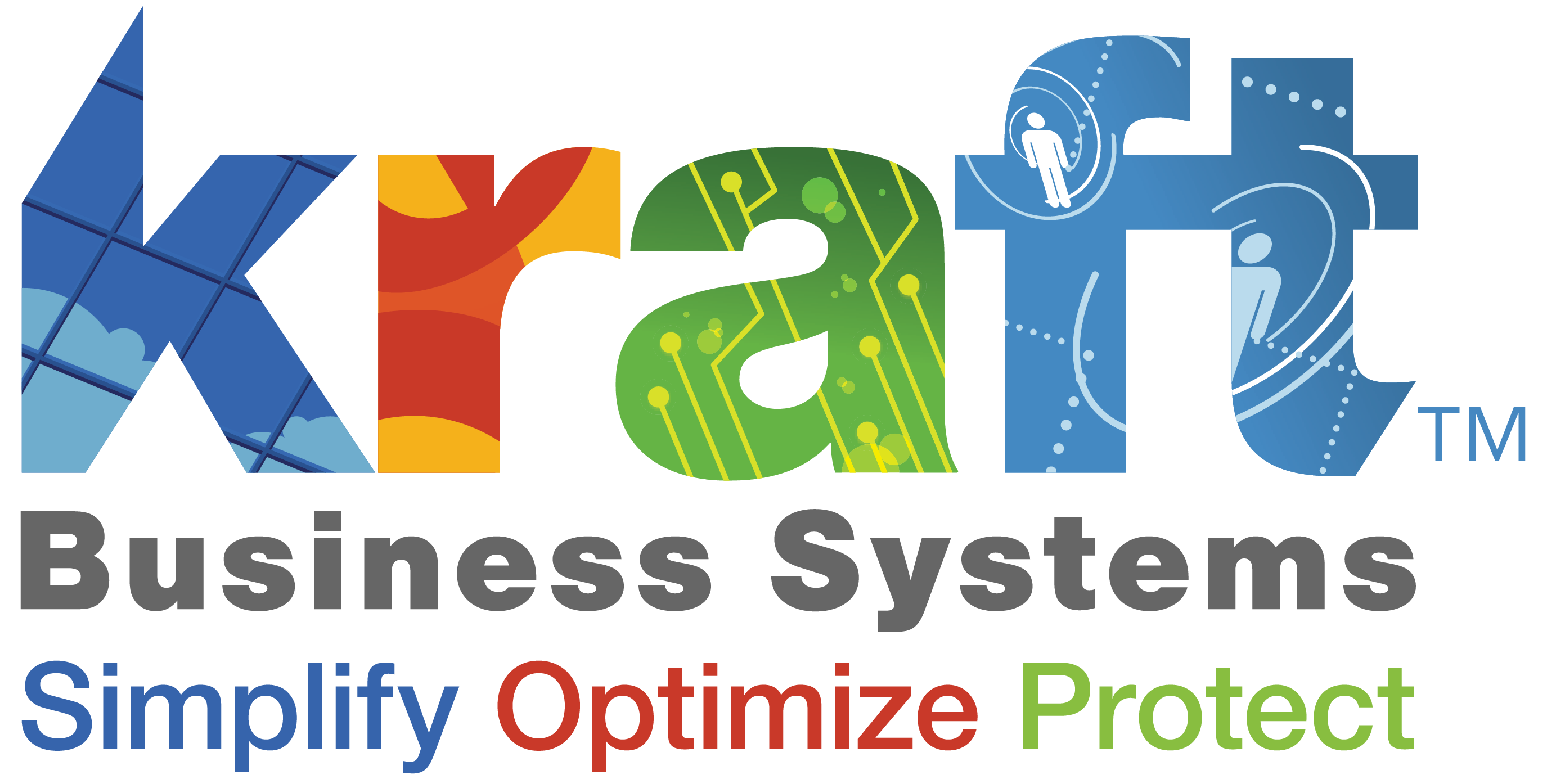Document management software for law firms is now the backbone of efficient legal practice. Firms juggle case files, contracts, correspondence and court filings every single day. Without a smart system, attorneys lose billable hours just hunting for information.
Going digital is no longer just “going paperless”—it is about staying competitive. Practices that adopt modern document management report 38 % caseload growth and capacity for 276 extra matters each year.
A legal DMS fixes three problems that plague traditional file rooms:
- Lost time searching for documents.
- Version chaos when multiple people edit the same file.
- Compliance risk when data sits on unsecure desktops or email threads.
The right platform turns your firm’s collective knowledge into a strategic advantage.
The Paper-to-Digital Shift
Remote work forced many Michigan firms to close their file rooms overnight. Those that acceptd cloud systems now save roughly 528 hours per attorney each year and spend far less on printing and storage. Attorneys reclaim time for billable tasks instead of digging through cabinets—or inboxes.
Why Traditional Folders Fail
- Version sprawl: files named “finalv3_REAL.docx” lead to embarrassing filing errors.
- Email overload: critical documents vanish inside long threads.
- Security gaps: scattered files expose firms to malpractice claims and regulatory penalties.
A matter-centric DMS eliminates these pain points and prepares your practice for the next decade.
Complete Guide to Document Management Software for Law Firms
What Is a Legal Document Management System & Why Firms Need One
Think of document management software for law firms as your digital law library, filing clerk, and research assistant all rolled into one. It’s a specialized platform designed to handle the unique chaos that legal work creates – where a single case might involve hundreds of documents, dozens of email threads, and multiple deadlines that could make or break your client’s future.
The magic happens through matter-centric organization. Instead of wrestling with traditional folder structures where documents get scattered across different locations, everything related to a specific case lives together. That contract amendment, the client’s initial email, the court filing, and your research notes all connect to the same matter.
This creates what we call a single source of truth for each case. When opposing counsel calls with a question, you’re not frantically searching through filing cabinets or scrolling through months of emails. Everything is right there, organized and searchable.
The numbers tell a compelling story. Firms using proper document management systems report an average of $158,400 in additional annual revenue and can handle 276 more cases per year. For more insights on optimizing your Document Management Process, the patterns across successful implementations are remarkably consistent.
Key Pain Points Solved by a DMS
Lost time becomes found money when you implement the right system. The average attorney spends 2.5 hours daily just searching for information. A proper DMS cuts this down to minutes through powerful search capabilities that can find any document by content, date, author, or matter.
Missed deadlines transform from career-threatening disasters into manageable tasks. Centralized calendaring and automated reminders ensure nothing falls through the cracks. The system can create interconnected deadline chains where filing a motion automatically triggers reminders for response deadlines and hearing preparation.
Client trust builds naturally when you’re always prepared. Picture this: you’re in a client meeting and they ask about a document from six months ago. Instead of promising to “look into it and get back to them,” you pull it up instantly.
Benefits for Clients & Courts
Modern document management transforms the client experience in ways that directly impact your firm’s reputation. Secure client portals provide real-time case updates and document sharing that works around the clock.
Courts have accepted digital workflows, and they expect law firms to keep up. Electronic filing requirements are becoming standard, not optional. A proper DMS streamlines these processes and ensures compliance with court requirements.
Complete Guide to Document Management Software for Law Firms
Core Features Every Document Management Software for Law Firms Must Include
When you’re shopping for document management software for law firms, it’s easy to get overwhelmed by marketing promises. The truth is, not every system can handle the unique demands of legal practice. Generic business software might work for an accounting firm, but lawyers need specialized tools built for their specific workflows.
The difference between a good system and a great one often comes down to the details. You need full-text search that actually works – not just filename matching, but true content search that can find “breach of contract” buried in page 47 of a 200-page document.
Version control might sound boring, but it’s a lifesaver when three people are editing the same brief. Automatic versioning means you’ll never again wonder if you’re looking at the latest draft or last week’s version.
Email capture transforms how you handle correspondence. Instead of manually forwarding emails or losing important attachments in your inbox, you can drag messages directly into the appropriate case file.
Smart document tagging with custom metadata fields lets you categorize files in ways that make sense for legal work. You might tag documents by privilege status, document type, or opposing counsel involvement.
Workflow automation handles the routine stuff so you can focus on legal work. The system can automatically route documents for review, send deadline reminders, and trigger approval processes.
For firms ready to explore more sophisticated capabilities, our Advanced Document Management System guide covers enterprise-level features that can transform how large practices operate.
Matter-Centric Organization
Legal document management gets interesting when everything organizes around client matters. Instead of traditional folder structures, legal systems create dedicated workspaces for each case.
When you open a new case, the system creates a virtual war room where everything related to Smith v. Jones lives together. Documents, emails, calendar entries, notes, and task lists all connect to that specific case.
Metadata becomes incredibly powerful when it’s matter-focused. You can instantly pull up all documents created by a specific person, all correspondence with the client, or every filing related to a particular motion.
Email & Attachment Management
Email management separates the professionals from the pretenders when it comes to legal document systems. Most lawyers live in their email, but traditional email creates a documentation nightmare.
Professional systems offer seamless Outlook synchronization that works both ways. Calendar entries created in your document system appear in Outlook, and Outlook appointments can automatically create case-related calendar entries.
Drag-and-drop email saving changes everything. Select an email thread and drag it directly to the appropriate matter. The system extracts attachments automatically and preserves the entire conversation thread.
AI-Powered Document Management Software for Law Firms
Artificial intelligence isn’t science fiction anymore – it’s becoming a practical tool that saves real time for busy attorneys. Modern document management software for law firms includes AI features that actually make a difference.
Predictive filing learns how your firm organizes documents and suggests where new files should go. After analyzing content, the system recommends the appropriate matter and folder location.
Smart search understands natural language queries. Instead of learning complex search syntax, you can ask questions like “find all contracts with ABC Company from last year” and get relevant results.
Collaboration & External Sharing
Legal work requires careful collaboration with precise control over who sees what information. The right system makes this seamless while maintaining security.
Role-based access gives you granular control over document access. Associates might see case documents but not billing information. Paralegals might have full document access but limited administrative rights.
Audit trails create defensible records of every document access, modification, and sharing event. This becomes crucial for privilege logs and compliance requirements.
Secure external sharing lets you collaborate safely with opposing counsel, clients, and courts. The system creates password-protected links that can expire automatically and track access.
Complete Guide to Document Management Software for Law Firms
Cloud vs. On-Premise: Which Architecture Fits Your Practice?
Choosing between cloud-based and on-premise document management software for law firms feels like a big decision because it is. This choice affects your monthly costs, how your team works remotely, and even how quickly you can grow your practice.
Most law firms today are choosing cloud solutions, and for good reason. But let’s look at both options honestly so you can make the right choice for your specific situation.
| Feature | Cloud-Native | On-Premise |
|---|---|---|
| Initial Cost | Low (subscription) | High (servers, licenses) |
| Maintenance | Vendor managed | IT staff required |
| Uptime | 99.9% guaranteed | Depends on internal IT |
| Remote Access | Built-in | Requires VPN setup |
| Scalability | Instant | Hardware limitations |
| Updates | Automatic | Manual deployment |
| Compliance | Vendor certified | Self-managed |
The numbers tell a clear story. Cloud systems typically cost less upfront and deliver better reliability than most firms can achieve on their own. But there are still situations where keeping everything in-house makes sense.
Cloud Advantages for Document Management Software for Law Firms
Cloud-based systems have become the go-to choice for most law firms, and the reasons are pretty compelling.
Scalability happens instantly. Need to add three new associates next month? Click a button and they have access. Your document storage grows automatically as your firm handles more cases. No more panicking about running out of server space during a big litigation.
99.9% uptime is what professional cloud providers guarantee – and they deliver on it. That’s better than most law firms can achieve with their own servers. When was the last time your internet went down versus when your office server crashed? Exactly.
Remote access works seamlessly. Your attorneys can pull up case files from the courthouse, review documents from home, or collaborate with clients from anywhere. The pandemic proved how essential this capability is, but it’s valuable long after everyone returns to the office.
Automatic updates mean you always have the latest security patches and features. No more scheduling weekend IT projects or dealing with outdated software. The system improves continuously without disrupting your work.
Disaster recovery comes built-in. Your documents exist in multiple data centers across different geographic regions. Even if your office floods or catches fire, your files remain safe and accessible. Try achieving that level of protection with office servers.
When On-Premise Still Makes Sense
Some law firms still benefit from keeping their document management in-house, though these situations are becoming less common.
Regulatory constraints sometimes require it. If you handle classified government work or represent clients in highly regulated industries, you might need to keep certain documents on your own servers. These requirements are specific and usually clearly spelled out in your client agreements.
Legacy applications can create dependencies. Firms with significant investments in on-premise practice management or billing systems sometimes prefer integrated on-premise document management. The key word here is “sometimes” – most modern systems integrate well regardless of where they’re hosted.
Capital expenditure preferences matter to some firms. If your partners prefer owning equipment rather than paying monthly subscriptions, on-premise might align better with your financial philosophy. Just remember to factor in the ongoing maintenance, updates, and replacement costs.
The reality is that these situations are becoming increasingly rare. Cloud security and compliance capabilities now exceed what most firms can achieve internally.
Hybrid & Migration Best Practices
Many firms choose a hybrid approach during their transition period. This lets you test the waters while maintaining access to your existing systems.
Staged migration reduces risk and builds confidence. Start by putting new matters in the cloud while keeping historical files on your current system. Your team gets comfortable with the new platform without the pressure of migrating everything at once.
Data mapping before migration saves headaches later. Take time to catalog your existing document organization. Clean up those messy folder structures and eliminate duplicate files during the transition. It’s like moving to a new house – a perfect time to declutter.
Most firms find that once they start using cloud-based systems, they wonder why they waited so long to make the switch. The convenience and reliability typically exceed expectations.
For detailed implementation guidance, our Build a Document Management System methodology walks through the entire process step by step.
Complete Guide to Document Management Software for Law Firms
Security, Compliance & Governance Checklist
When you’re handling sensitive client information, security isn’t just a nice-to-have feature – it’s your professional responsibility. The American Bar Association’s Model Rule 1.6 makes it clear: lawyers must make reasonable efforts to prevent unauthorized disclosure of client information. That means your document management software for law firms needs bulletproof security from day one.
Think of security as your firm’s insurance policy. You hope you’ll never need it, but when a data breach happens, proper security measures are the difference between a minor incident and a career-ending disaster.
Modern legal document management systems come with enterprise-grade security built in. You just need to know what to look for and verify that your vendor actually delivers on their promises.
Data Protection Essentials
Encryption at rest and in transit forms the foundation of document security. Your data should be scrambled using AES-256 encryption or better – both when it’s sitting on servers and when it’s traveling across the internet.
Geographic redundancy protects against disasters both natural and man-made. Leading providers store copies of your documents in at least three separate data centers across different regions.
Multi-factor authentication (MFA) should be mandatory, not optional. Passwords alone aren’t enough anymore. MFA requires something you know (password) plus something you have (phone app or hardware token). This simple step blocks 99.9% of automated attacks.
Automated backup and recovery happens behind the scenes, but it’s your lifeline when things go wrong. The system should create daily backups with point-in-time recovery capabilities.
Compliance Standards to Verify
Different practice areas create different compliance requirements, and your document management system needs to handle whatever regulations apply to your clients.
SOC 2 Type II certification demonstrates that your vendor has proper security controls and undergoes regular third-party audits. This isn’t just a piece of paper – it’s proof that an independent auditor verified the vendor’s security practices over time.
HIPAA compliance becomes essential for health law practices. Look for vendors who provide business associate agreements (BAAs) and understand the specific requirements for protected health information.
GDPR requirements affect any firm with European clients or cases involving EU data. Your system needs data processing agreements and “right to be forgotten” capabilities.
For comprehensive guidance on navigating these complex requirements, our detailed guide on IT Support for Law Firms: Security & Compliance covers everything you need to know.
Governance & Audit Trails
Permission management controls who can see what documents at a granular level. Associates should access case documents but not partner compensation information. The system should make these controls easy to set up and maintain.
Time-stamped audit logs create a permanent record of every document access, modification, and sharing event. These logs include user identification, timestamps, and specific actions taken.
Defensible deletion becomes crucial when retention periods expire. The system should securely destroy documents in a way that meets legal standards for data destruction.
Complete Guide to Document Management Software for Law Firms
Choosing & Migrating to the Right Document Management Software for Law Firms
Choosing the perfect document management software for law firms feels overwhelming when you’re staring at dozens of options. We’ve walked alongside many law firms through this journey, and there’s definitely a right way to approach it.
Start with honest self-reflection about your firm’s current struggles. Are attorneys spending too much time hunting for documents? Do you have version control nightmares? Write down these pain points because they’ll guide your entire selection process.
The biggest mistake we see is firms choosing systems based on feature lists rather than actual workflow needs. Focus on needs assessment by involving the people who will actually use the system daily.
User buy-in makes or breaks implementation success. Include attorneys, paralegals, and administrative staff in vendor demonstrations. Let them ask questions and voice concerns.
How Document Management Software for Law Firms Integrates with Your Tech Stack
Your new document management system needs to play nicely with existing software. Law firms typically juggle multiple applications, and disconnected systems create more problems than they solve.
Microsoft 365 integration isn’t optional – it’s essential. Documents should open directly from the DMS in Word or Excel, save back automatically, and maintain proper version control.
eSignature services streamline client interactions and contract execution. Seamless integration eliminates the copy-paste workflow that wastes time and introduces errors.
Practice management and billing systems should share data automatically. When you create a new matter in your case management system, the document management system should automatically create the corresponding matter workspace.
Migration Steps from Legacy Servers or Basic Cloud Storage
Migration doesn’t have to be scary if you approach it systematically. Start with a thorough inventory of existing documents. This reveals how much data you’re dealing with and identifies cleanup opportunities.
Data cleansing might seem tedious, but it’s your chance to start fresh. Remove outdated files, eliminate duplicates, and establish consistent naming conventions.
Pilot group testing reduces risk and builds confidence. Choose a small team and migrate a limited set of active matters. Work through issues with a manageable scope before expanding to the entire firm.
Phased rollout prevents chaos. Migrate one practice group at a time or start with new matters while keeping historical files in the old system temporarily.
For specific automation strategies that smooth the transition process, our guide on Four Tricks for Setting Up Automated Document Management Solutions provides practical implementation tips.
Post-Launch Adoption Tips
Implementation success depends on what happens after go-live. Comprehensive training goes beyond basic system navigation. Show people how the system improves their specific daily tasks.
Success metrics help you measure progress and identify problems early. Track usage statistics, document retrieval times, and user satisfaction scores.
Continuous improvement keeps the system valuable over time. Schedule regular check-ins with users to gather feedback. Small configuration changes can dramatically improve user experience.
For detailed remote work strategies, check out our comprehensive guide on Document Management for Remote Teams.
Change management requires patience and persistence. People need time to adjust to new workflows, and that’s perfectly normal.
Frequently Asked Questions About Legal DMS
How does a DMS boost billable hours?
Document management software for law firms creates more billable time by eliminating the administrative tasks that eat away at your day. Think about how much time you spend hunting for that one email attachment or trying to figure out which version of a contract is the latest.
The average attorney recovers 64 hours annually just from automated time tracking reminders alone. When you’re not scrambling to reconstruct what you worked on last week, you can focus on the actual legal work that clients value.
Smart search features turn document retrieval from a treasure hunt into an instant process. Instead of spending hours digging through file cabinets or email chains, you type a few keywords and find exactly what you need in seconds.
Automated document generation makes an even bigger difference. Using templates and clause libraries can reduce routine drafting time by up to 80%. That contract amendment that used to take two hours now takes twenty minutes.
What files can be stored?
Modern legal document management systems handle everything your firm creates or receives. Legal documents like briefs, contracts, pleadings, and findy responses are the obvious starting point, but that’s just the beginning.
Communications get stored too – emails, letters, meeting notes, and phone logs all live in one organized system. No more hunting through different email accounts or trying to remember who sent what to whom.
Multimedia files are becoming increasingly important in legal work. Audio recordings from client interviews, video depositions, photographs from accident scenes, and demonstrative aids for trial all need secure storage and easy retrieval.
Scanned materials from physical documents become fully searchable through OCR technology. Those old case files sitting in storage boxes can become part of your searchable digital archive.
How long does migration usually take?
Migration timelines depend on your firm’s size and how much historical data you’re moving. Solo and small firms with 1-5 attorneys typically complete migration in 2-4 weeks. There’s less data to move and fewer people to train.
Mid-size firms with 6-25 attorneys usually need 1-3 months for complete migration. The complexity increases with more users, more complex file structures, and more integration requirements.
Large firms with 25+ attorneys should plan for 3-6 months. These implementations involve multiple practice groups, complex security requirements, and extensive training programs.
The secret to successful migration isn’t speed – it’s taking a phased approach. Start with new matters while gradually moving historical files.
Complete Guide to Document Management Software for Law Firms
Conclusion
The legal profession stands at a crossroads. Firms that accept document management software for law firms are pulling ahead, while those clinging to paper files and scattered digital folders are falling behind. This isn’t just about keeping up with technology – it’s about survival and growth.
The numbers don’t lie. Firms using modern document management systems see 38% caseload growth and handle 276 additional cases annually. They recover 528 hours through automation alone. These improvements translate directly to increased revenue and happier clients.
Your clients notice the difference between an attorney who fumbles through email chains searching for documents and one who has every case detail at their fingertips. Courts expect digital submissions and electronic filing. Remote work requires secure, accessible document systems.
The question isn’t whether your firm needs document management – it’s which system will serve you best. Cloud-based solutions offer the reliability, security, and scalability that most firms can’t achieve on their own. The technology has matured to the point where security concerns are largely addressed through proper vendor selection.
At Kraft Business Systems, we’ve guided law firms throughout Michigan through this digital change. From solo practitioners in Traverse City to large firms in Detroit, we understand the unique challenges facing legal practices. Our team knows how to balance cutting-edge technology with the personal service that makes law firms successful.
The future belongs to firms that use technology to improve their legal expertise, not replace it. Document management software for law firms provides the foundation that lets attorneys focus on practicing law instead of hunting for files.
Your firm’s growth depends on making this change sooner rather than later. Every day you delay is another day of lost productivity, missed opportunities, and frustrated clients.
Ready to join the firms that are thriving instead of just surviving? Explore our comprehensive Document Management System solutions and find how we can help transform your practice. Your future self – and your clients – will thank you for taking action today.













